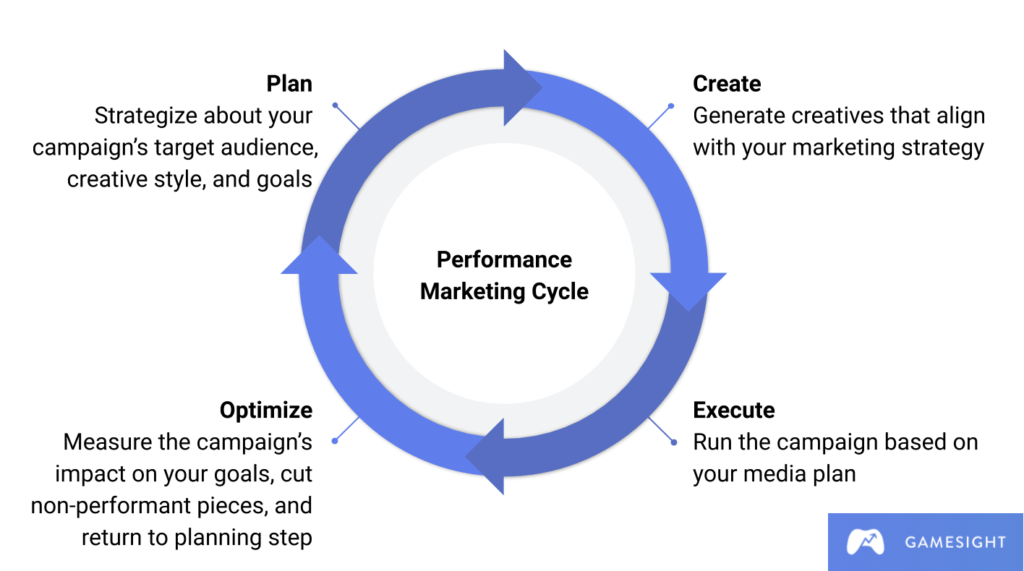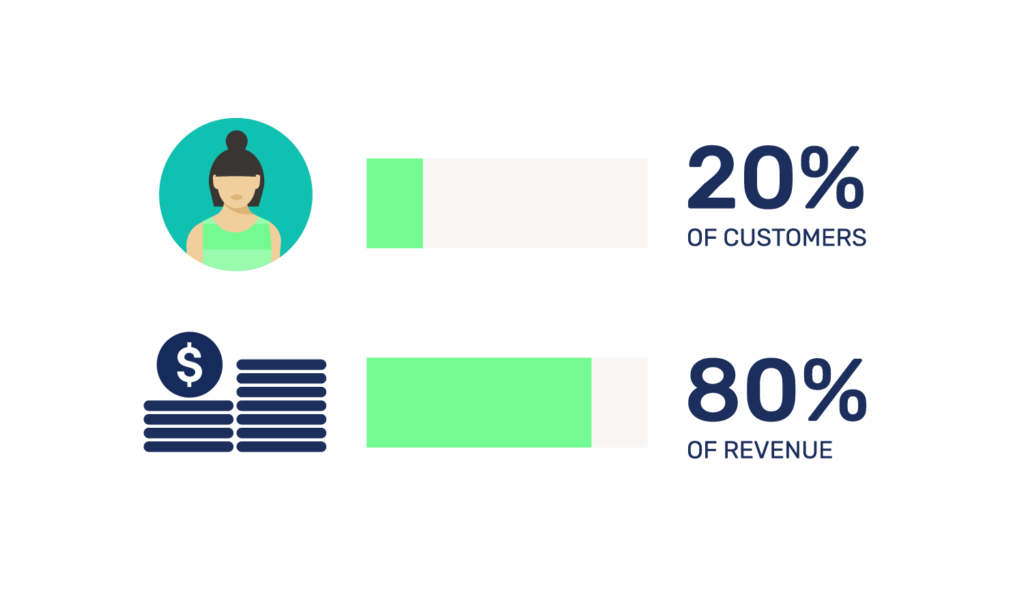Performance Marketing – 6 Types of Customers to Know
If you want to do well with performance marketing, you need to think like a marketer. That means knowing what your customers need and what they expect to find.
It would help if you also thought as a marketer when trying to promote your products or services. It would be best if you found ways to tell your story and build the right relationships so that people will buy from you. This takes time and practice.
You must learn how to identify your customer base. You will know what your target customers want to hear and what they want to read. It would be best to learn how to write well, design a logo, use social media, write a press release, and make it look like you have a real business. These skills will help you to become a better marketer.
In the world of performance marketing, there are six main customer types to consider: The Passive Customer, The Neglectful Customer, The High-Value Customer, The Low-Value Customer, The Loyal Customer and The Active Customer.
Understanding these types and how each one will react to your performance marketing messages is critical for success in the digital age. This post will teach you the types and give you ideas for creating and executing great marketing campaigns for each type.
When you think of customer experience marketing, you probably imagine something more glamorous than simply knowing your audience. After all, it takes time and resources to truly understand who your customers are, why they’re buying your products, and what they’re looking for in terms of a brand experience.
But it’s possible to get a solid foundation for performance marketing without actually doing anything about your customers. By learning about the different types of customers your brand serves, you can understand whom you’re talking to and how to deliver the message best.
By identifying the six different types of customers you serve, you can begin to understand your audience, build a strong content strategy, and design a marketing plan that will reach each one.
This is a quick tutorial on a strategy I’ve personally implemented to make my customers more profitable. But first, let’s be clear.
Table of Contents
What is Performance Marketing?

Performance Marketing is a term used to describe marketing efforts directed toward consumers who are already your customers, or in the process of becoming a customer, or who may want to become a customer. This type of marketing is commonly called Customer Relationship Marketing or CRM.
In its simplest form, it means identifying your target market, building relationships with them, and promoting your products and services to them through various media channels.
Performance marketing is an effective strategy that you can use to target individuals based on their interests and behaviours.
A performance marketing campaign works with data (i.e., social media analytics) to identify the individuals that need to be targeted. For example, a company might target individuals interested in purchasing a specific product. When a person has expressed interest in a particular product, they are more likely to purchase it.
So, by using performance marketing, a business can identify the individuals that need to be targeted. For example, you can use social media sites for advertising a product to individuals already interested in it. When people visit a business’s website, they will see advertisements for the products they are interested in.
In performance marketing, the digital channel is a significant driver. Digital channels can target individuals based on their interests and behaviours. Because of this, digital channels are typically the primary source of information used to create campaigns.
However, there are many other ways to gather information about individuals. For example, a business can pay for surveys and research studies to gain insights into their target audience.
Also, the business can get information from friends and family. Some of the best information is often gathered from the people close to the individual being targeted.
Is Performance Marketing Essential?
Is performance marketing essential? Absolutely!
Performance marketing is the art of getting your brand in front of people interested in what you have to offer. You can spend much money on ads, but if those people aren’t interested in what you’re selling, you haven’t done your job.
To increase the chances of your ad being seen, you need to make sure your ad is relevant, interesting, and engaging. If your brand is perceived as dull, irrelevant, and boring, it’s not worth paying for an ad.
How can Performance Marketing grow a Brand?

It is a highly effective, low-cost way to grow your customer base and drive conversions. Many tools and platforms can help you reach the right people, but the key to successful performance marketing is finding the right audience. This means understanding who they are and what they need. Once you’ve done that, you can build a program specifically for them.
There are several ways to incorporate performance marketing into your marketing strategy. One of the easiest methods is through the use of surveys.
Surveys can help you gather valuable data regarding your audience and gauge interest in specific services. They also offer insight into the kind of content resonating with your customers.
Today’s customers are increasingly mobile, and they want brands that understand the differences between the desktop and the mobile versions of their sites. That means creating a site that is responsive or mobile-optimised.
Also, brands need to think about their mobile strategies on a larger scale. With the growth of social media, many businesses are starting to focus on their mobile presence on Facebook, Twitter, and Pinterest. Still, they aren’t thinking about how their mobile efforts translate into a more comprehensive strategy.
6 Types of Customers to Know and How to Treat them differently
It takes time to figure out the unique characteristics of each customer. By paying attention to their needs, behaviours, and goals, you can better determine how to present content that resonates with each of them.
Whether your audience is composed of your employees, customers, or community, understanding your key stakeholders’ needs and wants will help you better engage and grow your brand.
Customer segmentation refers to grouping individuals based on a common characteristic or set of characteristics.
When businesses segment customers, they’re hoping to identify groups of people who have similar needs and wants and therefore have a higher propensity to buy the same products or services. But segmenting customers is not always easy, and segmenting customers based on different types of customers can sometimes be even more complicated.
1 – The Passive Customer

The passive consumer is the customer who exists without actively participating in any activities that are related to your business. These consumers are often referred to as the “customer base”.
The most profitable customers actively seek out your brand and interact with your company. The average customer base comprises these passive customers who don’t seem to care about what you’re doing and don’t even know they exist.
Businesses should be willing to experiment with different options to avoid being passive. In performance marketing, businesses are often limited to one channel or one type of content.
But there are plenty of creative ways to experiment. For example, a business could experiment with sending emails to consumers and asking them if they would be willing to complete an online survey.
2 – The Neglectful Customer
Why do people neglect the things that matter to them? In the case of the neglected customer, there are many reasons. The customer may not recognise the significance of the information and may even feel that the product is not essential to them.
Other factors include lack of motivation, apathy, disinterest, and indifference. And yet, neglectful customers can be a powerful marketing tool for performance marketers.
There are many misconceptions about the customers in performance marketing. We all want to think that we are the perfect customer and willing to pay any price to get what we want.
We think of our audience as if they are a bunch of angels. We forget that not every marketer is an angel. Every company has a neglectful customer.
A neglectful customer is the kind of customer you don’t see often.
- Neglectful customers are challenging to identify.
- They may never say anything negative about your products or services.
- They may never complain or even express discontent with your products or services.
- They may not ever say anything wrong about your brand.
But in reality, you are dealing with a neglectful customer every day.
3 – The High-Value Customer

When it comes to the performance marketing segment of sales, the high-value customer is a different animal. A high-value customer is a top performer among your customers, meaning that they provide the highest revenue per customer. They are the most valuable customers. And they tend to have the longest tenure and most outstanding lifetime value.
One thing that many businesses struggle with is the ‘value of the customer.’ Many business owners want to believe that you should reflect the value of the customer in the price, but that’s not the case.
If you want to sell premium products or services, you need to give people something extra to purchase. The best way to do this is to have the highest quality product possible. The customer should pay more because they get more out of the experience than the cost of the product.
4 – The Low-Value Customer
The low-value customer is a critical component of performance marketing. In some industries, such as retail and airlines, customer lifetime values (CLVs) are usually under $5. When it comes to performance marketing, the industry average is $50.
Performance marketing is about finding ways to create long-term relationships with customers. By creating low-value customers who are highly likely to churn, you can reduce the cost of acquiring new customers while still getting more sales from the customers you already have.
When it comes to selling through email, many marketers assume that high-value customers are more valuable than low-value ones.
This is false. Because low-value customers are less likely to spend money, they require less of your time. High-value customers are much more expensive to acquire. They cost you time and effort because you have to get to know them, make them feel unique and vital, and convince them to become loyal to your brand.
Low-value customers may only ever buy once, whereas high-value customers are likely to become repeat buyers and will spread the word about your business.
5 – The Loyal Customer

“Loyalty” isn’t just about keeping a customer; it’s about maintaining your relationship with customers for your long-term benefit. That means being willing to give your customers a little something extra.
Think of loyalty as a gift—not something you offer to someone for a price. The price you pay is only part of the cost. Loyalty is a gift to your customers that lets them know you value them.
Performance marketing strategies are all about keeping customers happy. They’re all about creating a long-term relationship. And loyalty is the foundation of any good relationship. But how do you keep your customer loyal to your brand?
The answer is simple: Create an experience they want to participate in again and again and again. It’s this concept that performance marketers call the customer lifecycle. The customer lifecycle is about helping customers understand how to convert new potential customers into long-term customers.
6 – The Active Customer
We’re all familiar with the concept of active customers. These people actively engage with your brand, share their opinions, and provide helpful feedback.
If these customers are happy, they’re more likely to recommend you to others and use you again in the future.
The main difference between active and passive customers is that active customers are more likely to share their experiences on social media and make their feedback known. If you don’t already have a strategy to turn passive customers into active ones, it’s time to start planning now.
The concept of the active consumer in performance marketing can be traced back to the early days of advertising and public relations. This kind of thinking was especially prevalent during the 1930s through the 1960s.
An excellent example of this is the Coca Cola campaign during the 1930s called “Coke Is It”. It consisted of a radio commercial where a man drank a Coke and went about his day.
On the day the ad aired, Coca Cola ran a contest where people could enter their names and addresses in exchange for a free case of Coke. This promotion was very successful because it demonstrated the product’s value to its target audience.
Conclusion
There are 6 types of customers to know regarding performance marketing.
There are two distinct sets of customers – those who are ready and those who are not. There are also two different groups of buyers regarding whether or not they are willing to pay for your service. And finally, there are two types of users – the ones who are ready and the ones who are not.
This guide will give you insight into what to do with each of these customers and help you understand your target audience better.
This article explores performance marketing and how you can apply it to your business.
